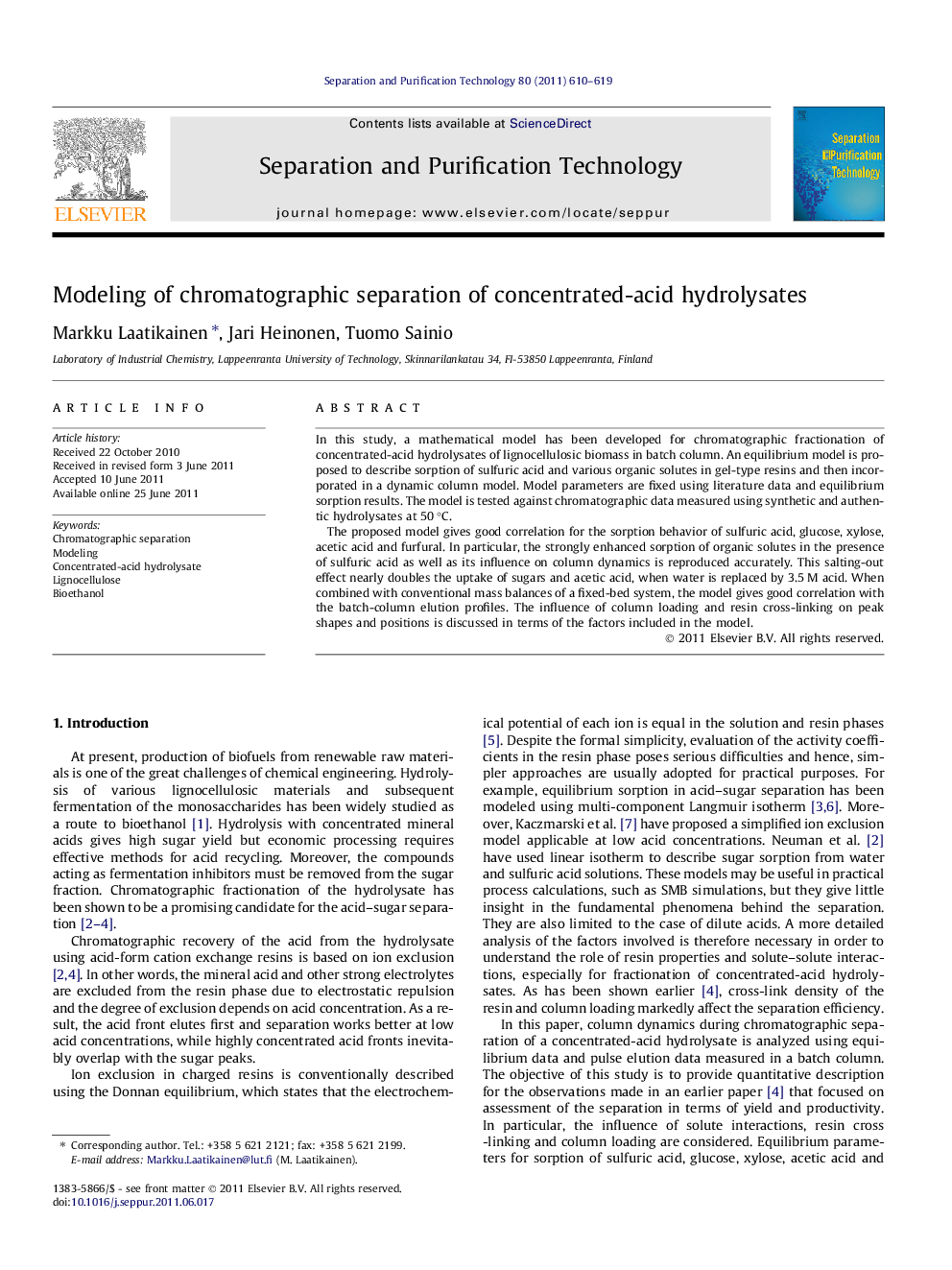| Article ID | Journal | Published Year | Pages | File Type |
|---|---|---|---|---|
| 642500 | Separation and Purification Technology | 2011 | 10 Pages |
In this study, a mathematical model has been developed for chromatographic fractionation of concentrated-acid hydrolysates of lignocellulosic biomass in batch column. An equilibrium model is proposed to describe sorption of sulfuric acid and various organic solutes in gel-type resins and then incorporated in a dynamic column model. Model parameters are fixed using literature data and equilibrium sorption results. The model is tested against chromatographic data measured using synthetic and authentic hydrolysates at 50 °C.The proposed model gives good correlation for the sorption behavior of sulfuric acid, glucose, xylose, acetic acid and furfural. In particular, the strongly enhanced sorption of organic solutes in the presence of sulfuric acid as well as its influence on column dynamics is reproduced accurately. This salting-out effect nearly doubles the uptake of sugars and acetic acid, when water is replaced by 3.5 M acid. When combined with conventional mass balances of a fixed-bed system, the model gives good correlation with the batch-column elution profiles. The influence of column loading and resin cross-linking on peak shapes and positions is discussed in terms of the factors included in the model.
Graphical abstractFigure optionsDownload full-size imageDownload as PowerPoint slideHighlights► Chromatographic separation of sulfuric acid from lignocellulosic hydrolysates. ► Separation is governed by ion exclusion and salting-out effects. ► The proposed model explains well equilibrium sorption in the studied system. ► The model allows simulation of dynamic separation in a chromatographic column.
